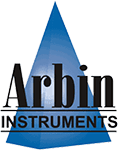
Tesla’s Battery Day, where upcoming projects and innovations are announced to investors, was held at the end of September. There were two anticipated announcements: the 百万英里的电池 和$100/kWh的电池价格点,分析家们认为这个价格将正式使电动汽车与内燃机并驾齐驱。
虽然没有正式宣布百万英里的电池,但特斯拉确实宣布,该公司的目标是在未来三年内推出成本仅为$60/kWh的电池,比专家预测的这个价格的电池可以上市的时间早两年。据该公司称,这一价格将通过降低电池制造成本来实现。特斯拉不仅打算最终将电池生产转移到内部,实施完全的垂直整合,而且还利用新获得专利的电池设计来降低成本。
总而言之,特斯拉概述了一个改进电池的五步计划。
细胞设计
特斯拉为实现其目标所做的关键性改变之一是设计了一个无标签电池。
特斯拉最近为他们的新电池设计申请了一项专利,取消了连接电极和能量负载的标签。这种电池结构据说有多种好处:制造更简单,零件更少,电通路减少5倍,这意味着能量可以更快更有效地流动。
但是这项技术将如何实现这些目标?目前圆柱形电池单元的设计涉及阴极和阳极材料层,由分离层分开,并卷成一个圆柱体。标签分别连接到阴极和阳极片上,并伸出来连接到负载上。
Tesla’s new battery design takes the cathode and anode foils and arranges them in a shingled spiral pattern. The placement pattern increases the surface area of the active material that it’s touching, facilitating faster movement of ions within the cell.
在传统的电池设计中,电极片也造成了一个瓶颈问题,因为离子只有一条路径可以到达负载处。通过移除标签,欧姆电阻减少,使能量更有效地传播。它还减少了由于化学活动的集中而在电池的某些区域积聚热量的机会。新设计允许这些反应在电池内均匀分布,减少过热的可能性。
细胞制造
The next stage in Tesla’s plan to revamp their batteries is how the cell is manufactured. This means simplifying the process as well as reducing their carbon footprint and energy consumption.
目前,大多数电池电极是用湿法制造的,这需要将电极粉末与水或其他溶剂混合,然后放在烤箱中干燥。
特斯拉正在完善一种干式工艺,直接将电极粉末转化为薄膜。虽然埃隆-马斯克表示,这是一个需要掌握的更复杂的方法,但一旦完善,它将意味着制造过程更简单,并减少过程中的能源使用。
阳极材料
Tesla, like many battery manufacturers and researchers, is interested in using silicon as a replacement for graphite for the battery anode. Not only is it inexpensive, it is also abundant in the earth’s crust, making it a more sustainable choice in the long-run. Silicon has been found to have 9x the electron capacity compared to graphite, meaning that it has a much higher energy capacity. However, it has been known to expand within the cell and eventually degrade after a number of cycles, rendering the battery obsolete.
To combat this, Tesla stated that it will use raw silicon and an elastic, ion-conductive polymer coating to stabilize the material. Theoretically, this would increase an EV’s range by 20%.
阴极材料
目前的电池使用钴作为阴极材料,因为它具有稳定性和高能量密度。然而,特斯拉之前已经说过,他们希望不再使用这种金属,因为它的毒性和开采往往与侵犯人权有关。相反,马斯克谈到了转向关注镍作为替代品。镍更便宜,能量密度高,但其本身并不稳定。该公司正在努力稳定这种材料,这将最终有助于降低电池成本。
此外,特斯拉谈到不希望受到镍供应的限制,并计划对其电池中使用的材料采取灵活的方法,根据其应用,在其储能解决方案中使用其他金属,如铁和镁。
细胞-车辆整合
The final step in Tesla’s plan is to integrate the battery pack directly into the structure of the car itself. Coining the term “structural batteries”, the 电动汽车电池 pack is not only storage for energy, but is also an integral part of the vehicle’s structure. This aims to reduce the vehicle’s mass and increase range by allowing for cells to be packed more densely without adding extra structure.
While it will be a few years before we see a fruition of Tesla’s vision, it is exciting to see how these innovations will continue to challenge the EV and energy storage industry as Tesla, and the rest of the world, looks forward to adopting greener and cleaner technologies.


